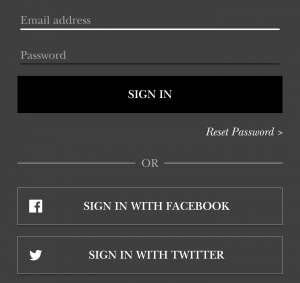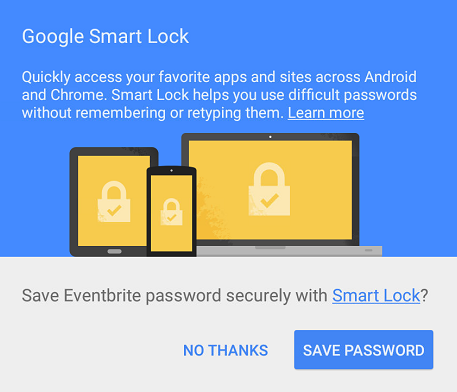Credentials are also synchronised between Chrome and Android, meaning that if a user already opted to save their password when signing into your website in Chrome, logging in on their mobile device may be as simple as opening your app.
Smart Lock can also help speed up the process of signing up new users, allowing us to prompt the user to choose an existing account on the device and use any additional information from this account to pre-populate sign up forms. If a Google account is chosen, this can even be used to provide a federated login as detailed earlier.
According to Google, since implementing Smart Lock in their app, The New York Times has seen 80% of new logins assisted by Smart Lock. Netflix have also seen big benefits from Smart Lock, with a 20% reduction in support cases related to account recovery for Android users. Google claim that over 60% of users are opting to save their login credentials in major Smart Lock enabled apps, quite an impressive feat for a relatively young service.
The benefits of Smart Lock are quite clear, but what about the effort involved? Google does a lot of the heavy lifting for us by way of the Google Play Services library. This includes showing popups for account selection, saving credentials and sign in confirmation, along with synchronisation of credentials with the cloud. Implementing this feature should not have a significant impact on the time to implement login in your app, but hopefully will have significant impact on the user experience.
On iOS, despite less uptake of iCloud Keychain the feature shouldn’t take much more effort to implement than Smart Lock on Android, and is still worth considering. We typically use the standard Keychain to store user credentials offline. From here, it is not too complex to synchronise these credentials, however there is no standard UI for selecting accounts. A custom selection view would have to be written as part of the login screen. Despite the extra effort, the improved user experience during the signup process will hopefully make it a worthwhile investment.
For more on Smart Lock, check out this post on the Android Developers blog.
Do you want to discover the power of seamless user experiences with social sign-on and Smart Lock integration in your app? Let The Distance bring this to life, get in touch today and discover how we can make it happen!






